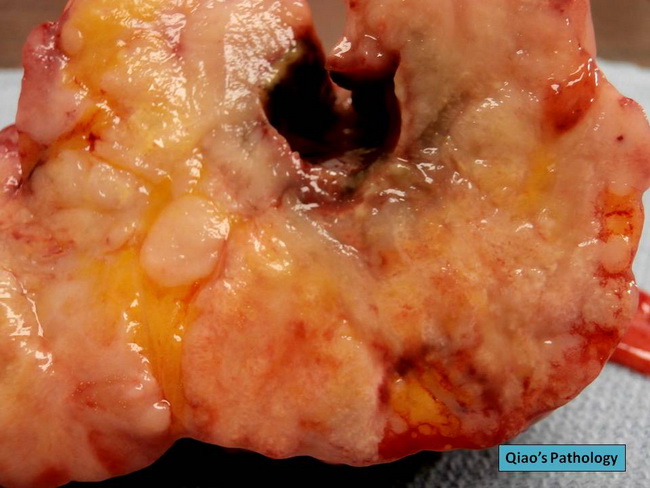Neuroendocrine Carcinoma of Colon : Terminology


Comments:
Neuroendocrine Carcinomas of the GI Tract - Terminology: The 2010 WHO classification of neuroendocrine tumors (NETs) of the gastrointestinal and pancreatobiliary tracts divides them into Grade 1 and Grade 2 based on mitotic counts and Ki-67 labeling index. NET, Grade 3 is not a recognized entity and all Grade 3 neuroendocrine neoplasms are considered to be poorly-differentiated neuroendocrine carcinomas (NECs). In the 2018 framework proposed by the WHO and IARC for the classification of neuroendocrine neoplasms, the term neuroendocrine neoplasm (NEN) includes all tumors with predominant neuroendocrine differentiation. Two classes of epithelial NENs were proposed and recognized - well-differentiated (referred to as Neuroendocrine Tumor; NET) and poorly-differentiated (referred to as Neuroendocrine Carcinoma; NEC). Paragangliomas - which are NENs of non-epithelial origin - were regarded as the third class of NENs. In the 2018 proposal, the NETs are divided into Grades 1, 2, and 3. In addition, the poorly-differentiated high-grade neoplasms are categorized as neuroendocrine carcinomas. NET, Grade 3, do occur in the gastrointestinal tract, although less commonly than in pancreas. The image shows cross section through neuroendocrine carcinoma of sigmoid colon. The bowel wall is massively thickened and the lumen (upper central portion of the image) is markedly narrowed with mucosal ulceration and hemorrhage. Variably sized whitish invasive tumor nodules are present extending from lumen side to subserosa. Image courtesy of: Jian-Hua Qiao, MD, Los Angeles, California, USA. Used with permission.



